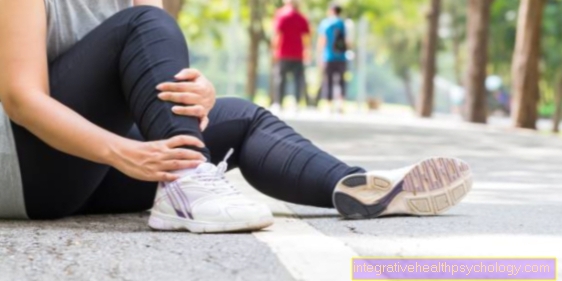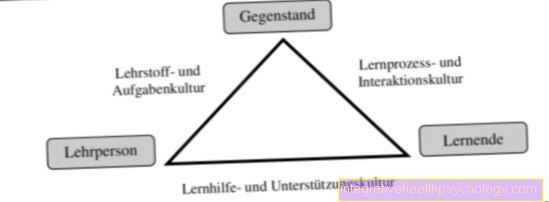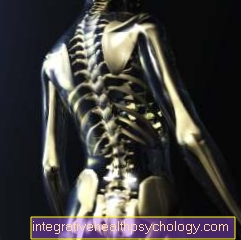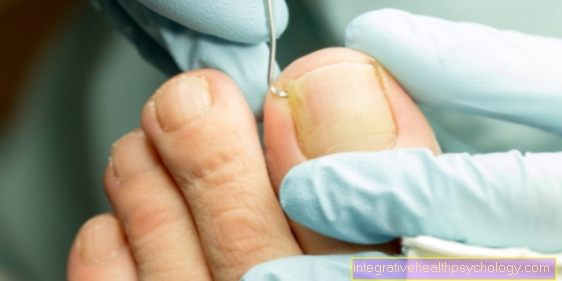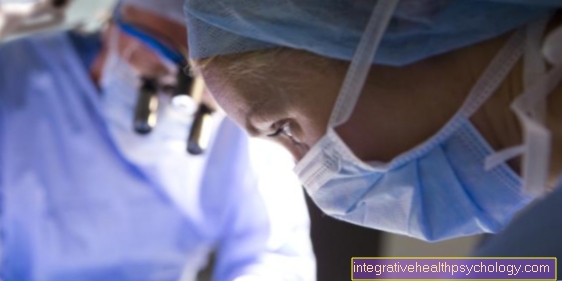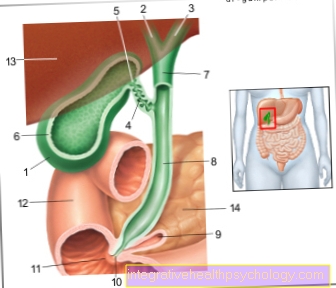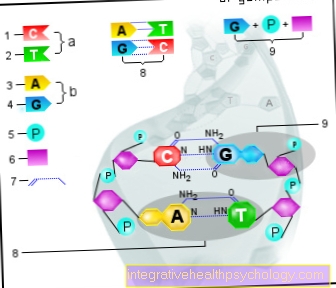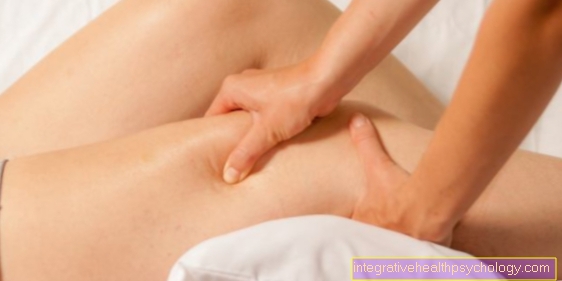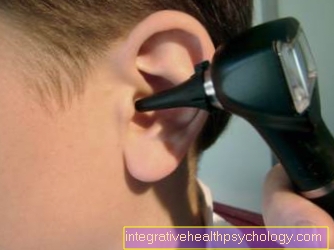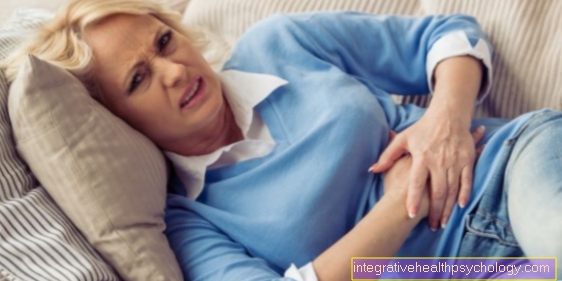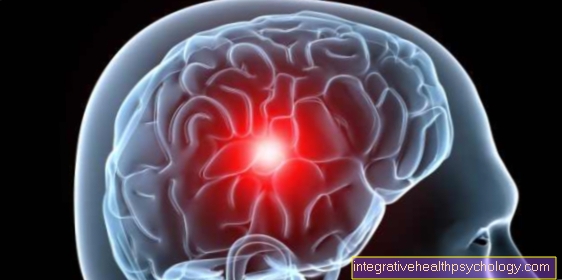What kind of pain occurs with osteoporosis?
Osteoporosis is an imbalance in the constant build-up and breakdown of bone substance, which results in a decrease in bone density. The elderly, who simply suffer from a reduction in bone density due to aging processes, are most at risk, and especially women after the menopause, since the hormonal change can have a negative effect on bone density. But also the long-term use of cortisone preparations, for example at Autoimmune- or allergic diseases (e.g. bronchial asthma), can lead to osteoporosis.
The reduced density increases the risk of bone fractures enormously, so that in some cases it does not even require an accident to break a bone!

Causes of the pain
Pain in osteoporosis is usually expressed by sudden (back) pain caused by a fracture of a vertebral body or another bone. This break is in turn promoted by the reduced bone density in osteoporosis. The latter is not painful, so that a broken bone (often the fracture of a vertebral body) is often the patient's first, but all the more painful, encounter with their osteoporosis - similar to high blood pressure that has not gone unnoticed for years and is only discovered by a heart attack.
Read more on the topic: Vertebral fracture in osteoporosis
Concomitant symptoms
In addition to the pain, a rounded back can often be observed. This is due to the fact that vertebral bodies do not break "with one jolt", but rather slowly and steadily collapse under the weight of the body above. Since the load in the front area, i.e. the area facing the stomach, is particularly high, the vertebral bodies often break wedge-shaped a, which results in a backward-bent shape of the spine and thus a rounded back.
The misalignment of the spine caused by the deformation of the vertebral body can trigger tension in the muscles surrounding the spine. These express themselves as pulling neck and back pain, which radiate up into the skull area and can lead to protracted headaches.
As the weight on the vertebral bodies compresses the vertebral bodies, some patients notice a decrease in height as the disease progresses.
Pain in the spine
Pain in the back and spine can generally occur in any patient suffering from osteoporosis. But they are particularly typical in women after the menopause. With them, the pain in the spine is often the first symptom of the disease. Nevertheless, it must of course be mentioned that osteoporosis is only one possible cause of back pain and spinal column pain in this population group and that the symptoms are often simply an incorrect load on the spine (e.g. overload during heavy physical work, poor posture).
Hip pain
While postmenopausal women are most likely to have back pain associated with osteoporosis, elderly patients are most likely to experience acute pain in the hip. Those affected often report an accident with a fall on the affected hip. Usually it is then Femoral neck affected and either compressed or even broken (the latter case is usually a highly dramatic clinical picture). In addition to the pain, a misalignment of the leg with shortening and turning outwards can often be noticed.
Read more on the topic: Femoral neck fracture
The treatment of this disease takes place, depending on the type and extent of the bone injury, either surgically or conservatively by sparing. A fracture in particular often represents an extremely important turning point in the life of elderly patients, which in the long term can greatly impair their mobility and thus their independence. For this reason, in the event of prolonged hip pain, a doctor should be consulted who can differentiate osteoporosis from other possible causes (e.g. osteoarthritis of the hip joint) and initiate appropriate measures to reduce the risk of a fracture.
Appointment with ?

I would be happy to advise you!
Who am I?
My name is dr. Nicolas Gumpert. I am a specialist in orthopedics and the founder of .
Various television programs and print media report regularly about my work. On HR television you can see me every 6 weeks live on "Hallo Hessen".
But now enough is indicated ;-)
In order to be able to treat successfully in orthopedics, a thorough examination, diagnosis and a medical history are required.
In our very economic world in particular, there is too little time to thoroughly grasp the complex diseases of orthopedics and thus initiate targeted treatment.
I don't want to join the ranks of "quick knife pullers".
The aim of any treatment is treatment without surgery.
Which therapy achieves the best results in the long term can only be determined after looking at all of the information (Examination, X-ray, ultrasound, MRI, etc.) be assessed.
You will find me:
- Lumedis - orthopedic surgeons
Kaiserstrasse 14
60311 Frankfurt am Main
You can make an appointment here.
Unfortunately, it is currently only possible to make an appointment with private health insurers. I hope for your understanding!
For more information about myself, see Lumedis - Orthopedists.
diagnosis
The diagnosis of osteoporosis is basically based on the representation of a reduced bone density by X-rays or by specific procedures Osteodensitometry (Bone density measurement). The latter can be seen as a supplement to the X-ray, as they offer a better resolution in cases of doubt, especially in the early stages.
If a decrease in bone density is measured in younger patients, a search should be made for metabolic diseases that can promote such a process. These primarily include diseases of the hormone metabolism (e.g. hyperthyroidism, Cushing's disease, diabetes mellitus) or a vitamin D deficiency, which may be due to impaired kidney function, among other things.
Read more on the topic: Diagnosing osteoporosis
Therapy of pain
For the long-term treatment of pain, it is of course essential to specifically treat the cause - in this case osteoporosis (see below).
In the short term, common pain relievers such as ibuprofen or diclofenac provide relief for mild to moderate pain. However, these should not be taken over a longer period of time (no more than about 10 days a month), as they can cause unpleasant side effects (stomach complaints up to ulcers; kidney damage). So if the pain is so intense and constant that the above remedies can no longer be exhausted, a systematic step therapy should be created with a doctor, which also includes painkillers containing opioids such as tilidine or tramadol.
Physiotherapy and physiotherapy are also suitable for milder pain or as a supplement to drug therapy. They help relieve tension and build muscle to relieve the skeleton. In some cases, psychological support can also be provided vto be useful.
The last and most profound therapy option are surgical procedures. For example, a collapsed vertebral body can be stabilized by injecting a fast-hardening plastic.
Therapy of osteoporosis
The treatment of osteoporosis aims to slow down the bone loss or the Reminalization the bone substance. A sufficient supply of calcium, which is an important building block of bone substance, and of vitamin D. This vitamin is an essential regulator of bone metabolism and is produced in the body in the kidneys and skin, among other things, is essential for this, which is why kidney damage as well as a Lack of UV exposure to the skin can lead to vitamin D deficiency. Since both substances are of such great importance for bone metabolism, there are practical combination preparations that contain both active ingredients.
In addition to these basic measures, there are other active ingredients. This includes above all the Bisphosphonates (e.g. Alendronate) or Raloxifene, which is mainly used by postmenopausal women. Other alternatives are the relatively new ones Denosumab, the Parathyroid hormone or Strontium ranelate.
Read more on the topic: Therapy of osteoporosis
Duration of pain
Due to the individually different degrees of severity and localizations, no general statements can be made about the duration of the pain. Some sufferers, especially those in more advanced stages, never become permanently pain-free even with optimal treatment. Others respond very well to the therapy and achieve extensive or even complete freedom from pain within a few weeks. This must of course be distinguished from short-term, purely symptom-oriented treatment with painkillers such as ibuprofen or diclofenac. For most patients, this very quickly leads to (largely to complete) freedom from pain, but loses its effect after a few hours. This can lead to an inappropriately high long-term use of painkillers, which in turn can lead to other undesirable symptoms (such as stomach ulcers).
In general, it should be emphasized that once started treatment with one or more of the above-mentioned active ingredients for the treatment of osteoporosis cannot make the symptoms go away "overnight". It can take weeks or even months for them to develop their effect and during which it is crucial not to be disturbed by a lack of improvement in the symptoms. Because, as is so often the case, the effective treatment of the pain associated with osteoporosis requires long-term, disciplined adherence to the therapy guidelines, especially to avoid relapses.
Read more on the topic: Active against osteoporosis

